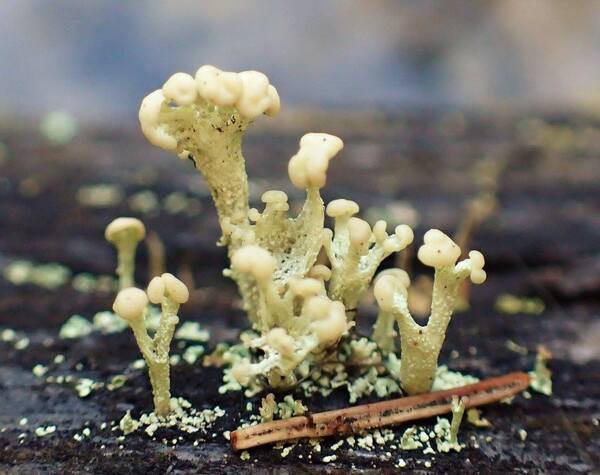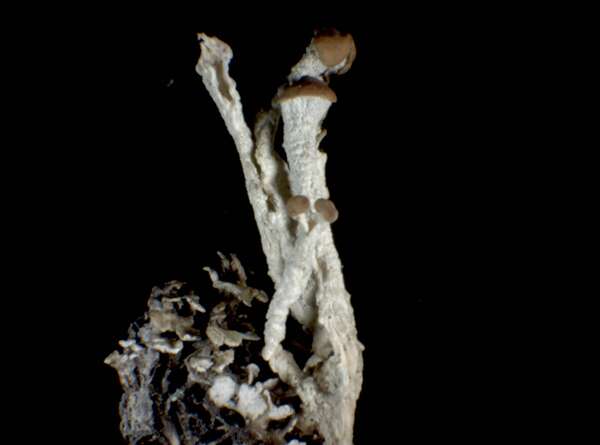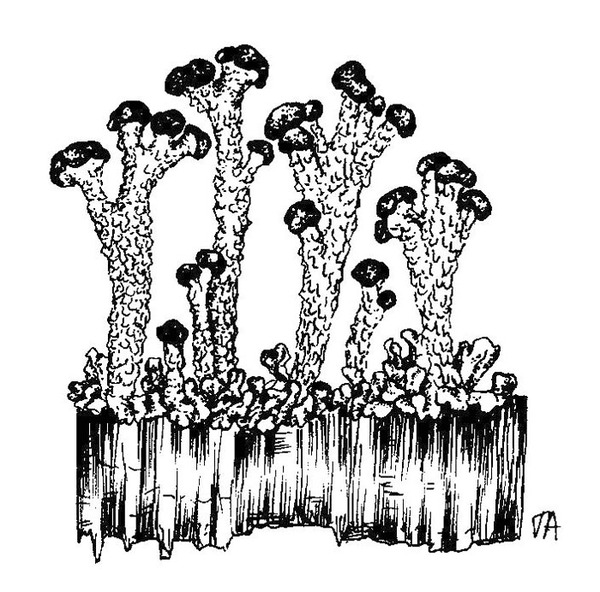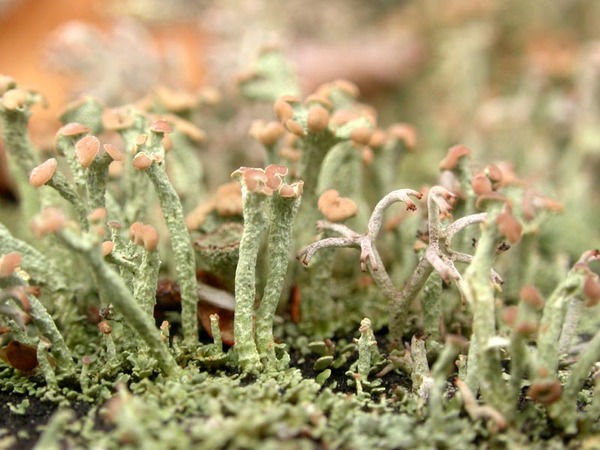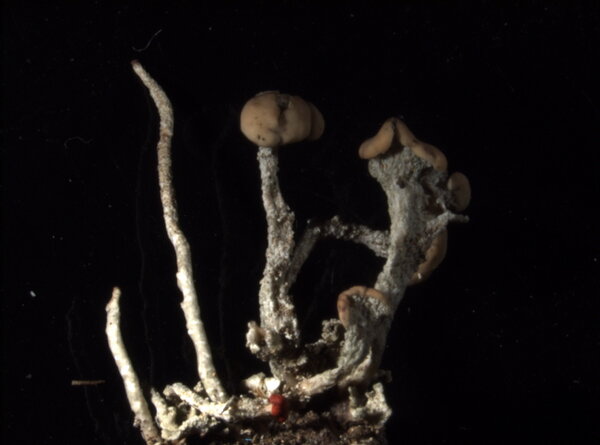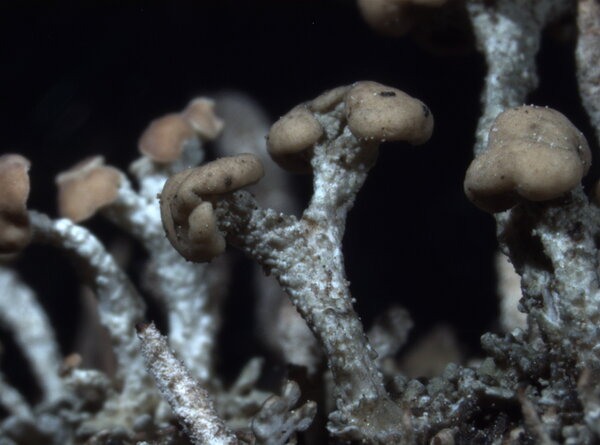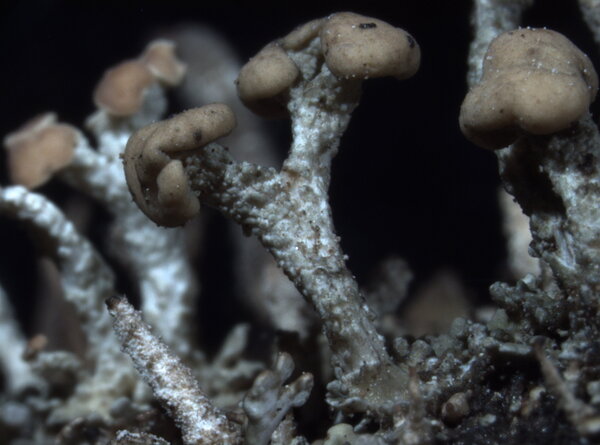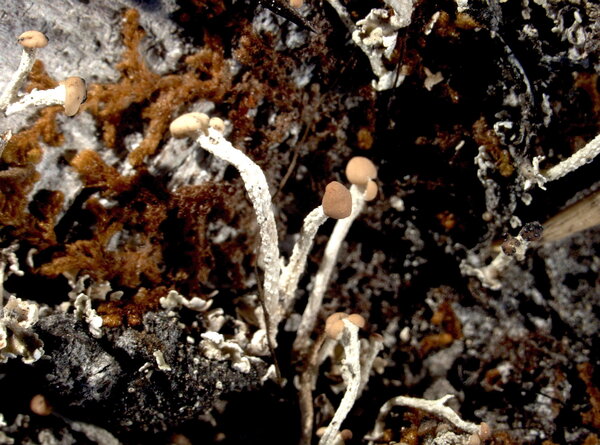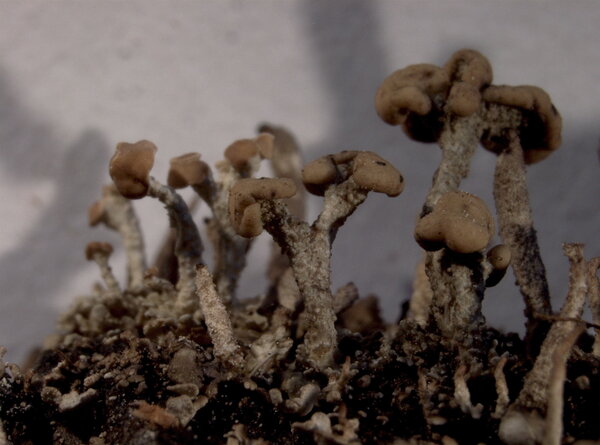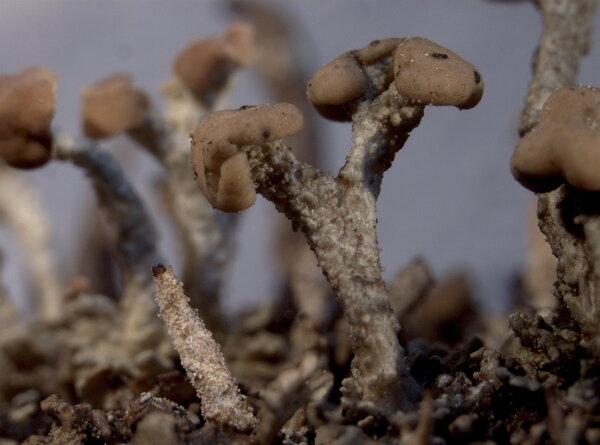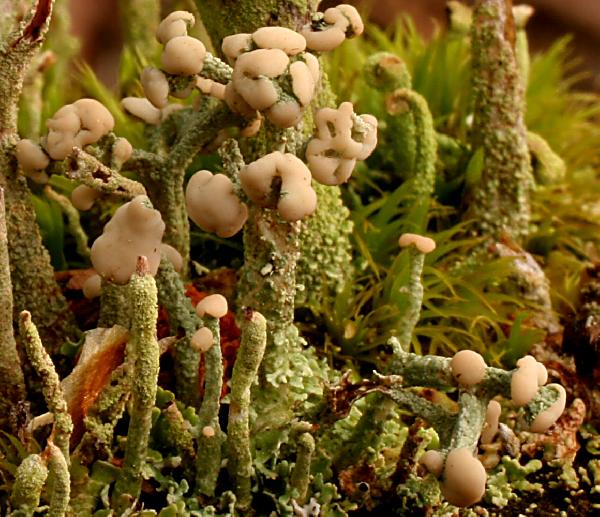Cladonia botrytes (K.G. Hagen) Willd.
Fl. Berol. Prodr.: 365, 1787. Basionym: Lichen botrytes K.G. Hagen - Tent. Hist. Lich.: 121, tab. 2, fig. 9, 1792.
Synonyms:
Description: Primary thallus squamulose, the squamules usually persistent but inconspicuous, small, up to 1.5(-2) mm long, widening and crenate to laciniate at apex, ascending, yellowish green above, whitish below, esorediate. Podetia yellowish-green to yellowish grey, the bases often slightly melanotic, subcylindrical, simple or sparingly dichotomously branched in upper parts, widening toward the tip below the apothecia, 5-30 mm tall, 0.3-1.5 mm thick, simple or sparingly branched toward apices, cupless, corticate to the base, becoming verruculose-areolate, sometimes longitudinally fissured, often terminated with one or more confluent apothecia, without squamules or rarely with a few small squamules at the base. Apothecia frequent, terminal, pale yellowish brown or pale ochraceous brown, often grouped in small clusters, convex, the clusters up to 4 mm broad. Asci 8-spored, clavate, thickened at apex, with a K/I+ blue tholus and a K/I+ strongly blue outer gelatinous sheath, Cladonia-type. Ascospores 1-celled, hyaline, ellipsoid. Pycnidia semi-immersed on the upper side of the primary squamules or on the sides of the podetia, shortly cylindrical to turbinate, constricted at base, pale brown, with a colourless jelly. Conidia hyaline, curved. Photobiont chlorococcoid. Spot tests: K-, C-, KC+ yellowish, or KC-, P-, UV-. Chemistry: usnic, barbatic, and 4-O-demethylbarbatic acids.
Growth form: Fruticose
Substrata: lignum
Photobiont: green algae other than Trentepohlia
Reproductive strategy: mainly sexual
Commonnes-rarity: (info)
Alpine belt: absent
Subalpine belt: very rare
Montane belt: extremely rare
Dry submediterranean belt: absent
Humid submediterranean belt: absent
Padanian area: absent
pH of the substrata:
1 2 3 4 5
Solar irradiation:
1 2 3 4 5
Aridity:
1 2 3 4 5
Eutrophication:
1 2 3 4 5
Poleotolerance:
0 1 2 3
Altitudinal distribution:
1 2 3 4 5 6
Rarity
absent
extremely rare
very rare
rare
rather rare
rather common
common
very common
extremely common
Loading data...
Occurrence data
Predictive map
Growth form: Fruticose
Substrata: lignum
Photobiont: green algae other than Trentepohlia
Reproductive strategy: mainly sexual
Commonnes-rarity: (info)
Alpine belt: absent
Subalpine belt: very rare
Montane belt: extremely rare
Dry submediterranean belt: absent
Humid submediterranean belt: absent
Padanian area: absent
pH of the substrata:
| 1 | 2 | 3 | 4 | 5 |
Solar irradiation:
| 1 | 2 | 3 | 4 | 5 |
Aridity:
| 1 | 2 | 3 | 4 | 5 |
Eutrophication:
| 1 | 2 | 3 | 4 | 5 |
Poleotolerance:
| 0 | 1 | 2 | 3 |
Altitudinal distribution:
| 1 | 2 | 3 | 4 | 5 | 6 |
Rarity
absent
extremely rare
very rare
rare
rather rare
rather common
common
very common
extremely common
Loading data...
Occurrence data
Predictive map


